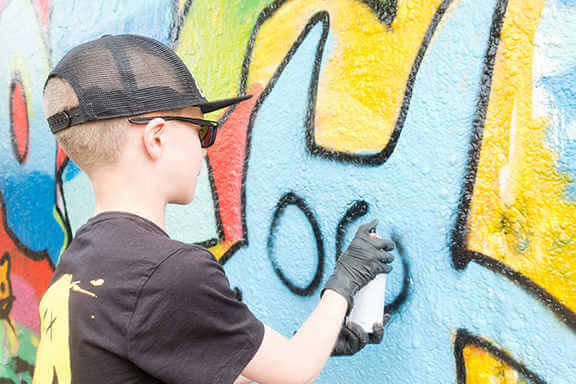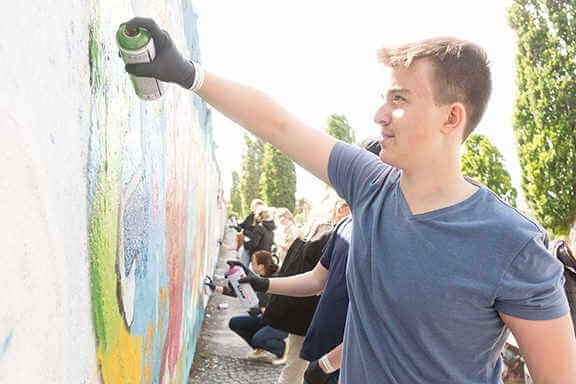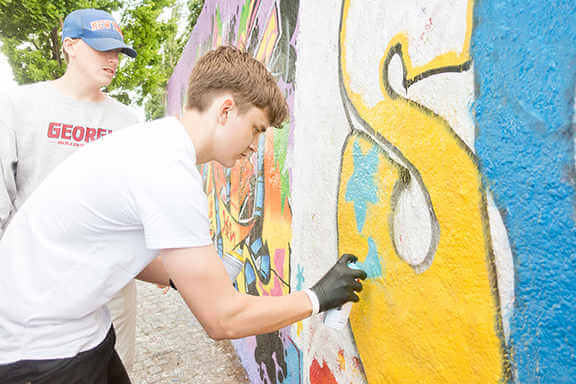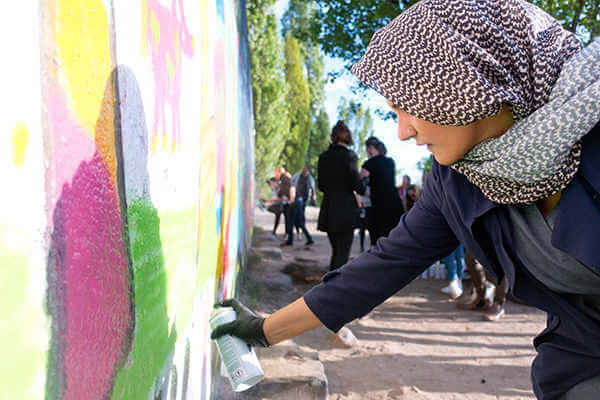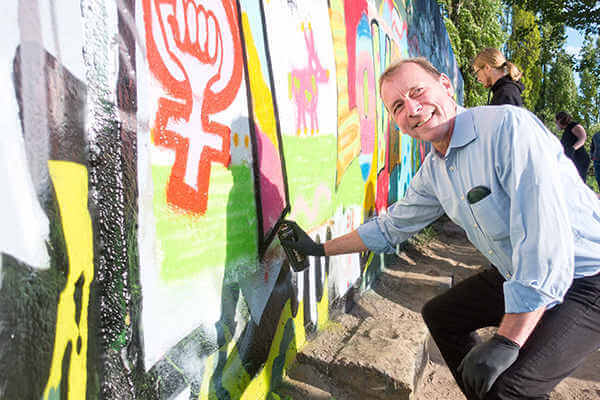PAINT YOUR FIRST GRAFFITI
BERLIN GRAFFITI WORKSHOP
We are thrilled to announce that our Graffiti Workshops have been officially voted as the “TripAdvisor Travelers’ Choice of 2024”! This is a huge accomplishment for us and a testament to the hard work and dedication of our team. Our graffiti workshop offers a unique and exciting way for visitors to experience the vibrant street art culture of Berlin. Participants have the opportunity to learn from professional street artists and create their own piece of graffiti under their guidance. It’s not just about the art, though, our workshop also delves into the history and social significance of graffiti in Berlin. We are so grateful to have received this recognition and would like to thank all of our past participants for their support. If you’re planning a trip to Berlin, be sure to check out our graffiti workshop and see for yourself why it’s a top choice among travelers.
Are you looking for things to do in Berlin, are you a couple looking for a unique date experience? A group of friends planning a day out? Or perhaps a company searching for an unforgettable team building adventure in Berlin? Therefore, join us to one of our Berlin Graffiti Workshop in the heart of the city!
For 20 years we have been painting all over the world and now want to share our love for this amazing culture, which is Graffiti and Street Art!
You can email us to get a quote for pricing and availabilities, we will provide you with a quick answer.
We are looking forward to meeting you soon!
"A INCREDIBLE WAY TO DISCOVER BERLIN "
Our Graffiti workshop in Berlin is a unique workshop that has its roots in the vibrant and ever-evolving graffiti and street art scene of the German capital. Our workshop was founded in 2018 by a group of local artists and graffiti enthusiasts who saw an opportunity to share their passion and skills with a wider audience.
The idea for the workshop came about as a result of the growing interest in street art and graffiti in Berlin, which had become a hotbed for the art form. The city’s unique history and cultural diversity had always been a source of inspiration for local artists, and the fall of the Berlin Wall in 1989 had opened up new possibilities for creative expression. However, despite the growing popularity of graffiti and street art, there were few opportunities for people to learn about the art form and develop their own skills.
As founders of the workshops, we saw an opportunity to fill this gap and create a space where people of all ages and backgrounds could come together to learn about graffiti and street art during our workshops. We wanted to create an event that was accessible to everyone, regardless of their prior art experience or skill level. The workshop is designed to be inclusive, welcoming, and supportive, and we committed to creating a safe and positive learning environment for all participants.
Our Graffiti workshop in Berlin began as a small, grassroots operation, using our own resources and equipment to run the workshops and different events such as Team Building for companies for example. However, as the workshop is since 2018 growing in popularity, we expand the program and reach more people around the world, joining our tour.
One of the things that sets our workshops apart is its focus on hands-on learning. Every participant is given the opportunity to work with well experienced professional street artists and graffiti writers, who provide guidance and instruction on everything from spray paint techniques to graffiti lettering. Our workshop also includes a professional photography report of the event, where participants will be photographed and receive their pictures the day after the workshop, after our team edited these shots to send you the finest selection of it, so you keep the best souvenir of your workshop with us!
Our amazing Berlin Graffiti workshop has also made a point of being active in the local community, working with local schools, youth clubs, and other organizations to promote the positive impact of graffiti.
Another unique aspect of our Graffiti workshops we offer, is its international focus. The program attracts participants from all over the world, creating a diverse and multicultural learning environment. We believe that this international perspective helps to broaden the participants’ understanding of graffiti, and allows them to learn from a wider range of artists and perspectives.
Today, our Berlin Graffiti workshop continues to be a leader in the field of street art education, providing a range of programs and opportunities for people to learn about graffiti and street art. The workshop has inspired the creation of similar programs in other cities around the world and continues to be a source of inspiration for the next generation of street artists. The founders’ vision of creating a safe and inclusive space for people to learn and grow as artists has become a reality, and our workshops will continue to be a vital part of the city’s street art scene for many years to come!

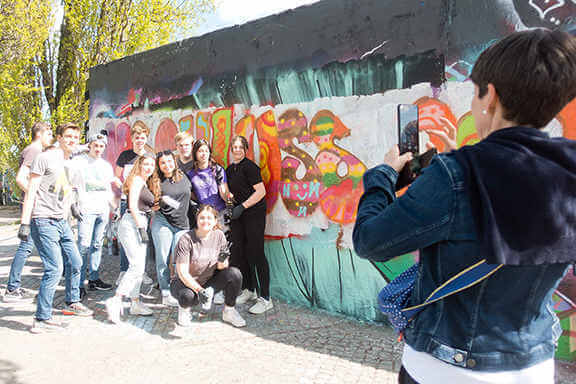
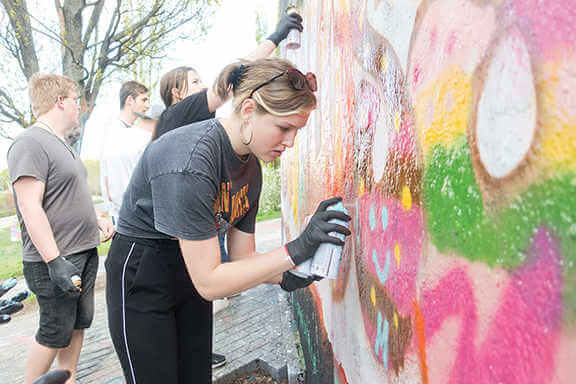



Graffiti has existed since the beginning of time, but it took a disturbing path during the last 50 years.
In the United States of America, especially in New York City, at the end of the 70’s, Graffiti appeared under a new form. Names of individuals or related to a gang, group, or crew could be seen on the walls of all major cities, written with spray cans and markers. A simple signature emerged: the tag was born. Then the letters got bigger, had more colors and were vibrant in its style, the beginning of graffiti pieces. This incredible rise in the graffiti phenomenon spread all over the US within a couple of years and the competition started to be seen or recognized on the street.
Therefore, young artists began using more stylish letters and characters with painted background to distinguish themselves from others. At that time, public transportation was the best way to have their name traveling through the city to gain recognition for free. As a result, trains became a new playground for the art scene and these young artists. When some avant-guardists saw in these tags, and graffitis in general, a new art form, opposite to the majority of people, who mistook it as vandalism and damaging to the citie’s surroundings.
Nowadays, graffiti and street art have never been more successful and popular. Many exhibitions, workshops, events and auctions took place, in Berlin and all over the world. Consequently, the expression “vandal” was replaced by the word “graffiti artist”.
Yet, nobody can deny the fact, that our environment lives with this form of expression and its codes. Every day, graphic arts, advertising, fashion and many other fields use the codes of these urban creations, while they are still considered as acts of vandalism and punished by law. However, this subculture is being considered as a major movement in contemporary art and perhaps the last significant culture of the 20th century.
We will, during our Street Art Berlin Tour and Graffiti Workshop, introduce you to this amazing culture that is called Graffiti.
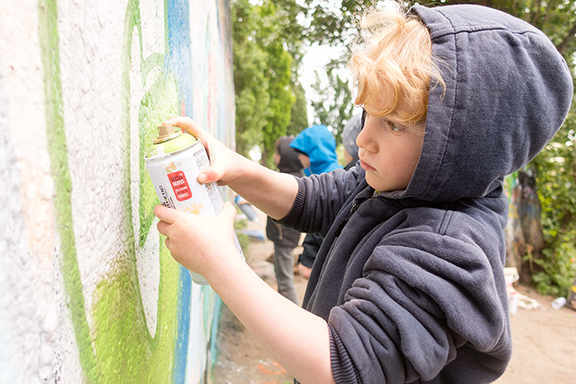
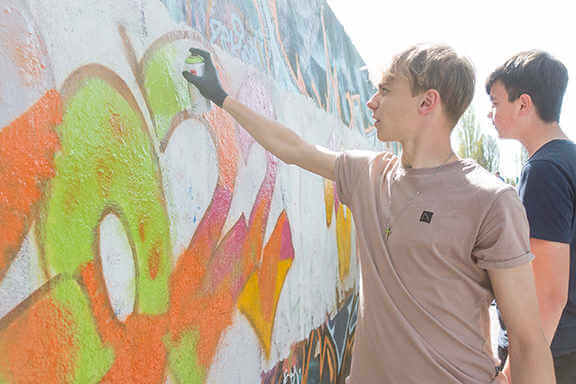
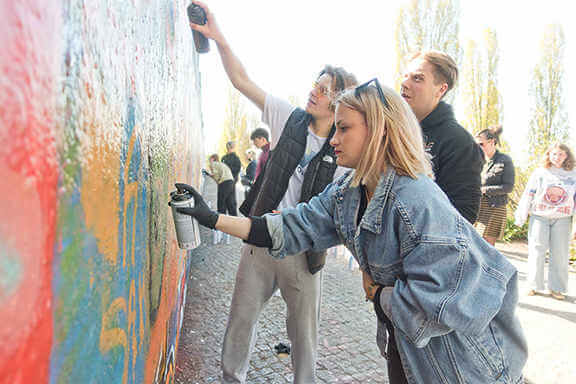
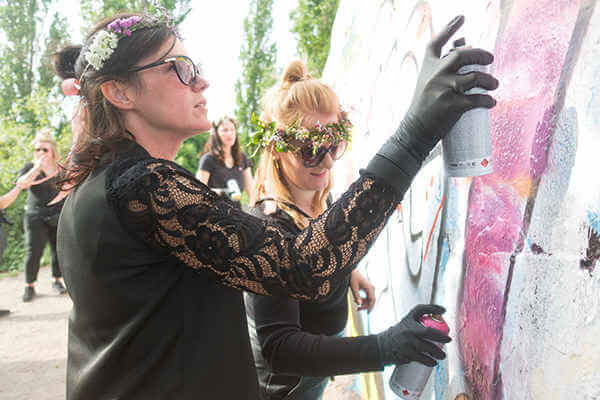
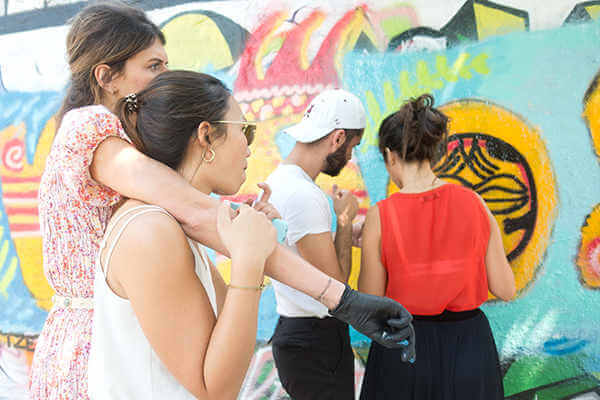

After the graffiti workshop in Berlin, you’ll have the opportunity to take home your own unique piece of memories of the experience. But that’s not all, we also offer a special bonus for all participants. We’ll send you a selection of edited professional quality pictures of your artwork taken during the workshop.
This way, you can share the pictures with your friends and family, and show off your new skills and the unique art piece you created. Furthermore, we will also capture candid shots of you in action while you are painting your first graffiti, these pictures are a great way to show the process and the journey of creating your own graffiti. These pictures will be a lasting memory of your experience with us and allow you to relive the workshop, and showcase your artistic skills to others.
The pictures are taken by a professional photographer, who will make sure to capture the details and essence of your artwork. This bonus service is included in the price of the workshop, and the pictures will be sent to you via email or any other way you prefer. This way, you can easily share your artwork with others and make them a part of your experience.
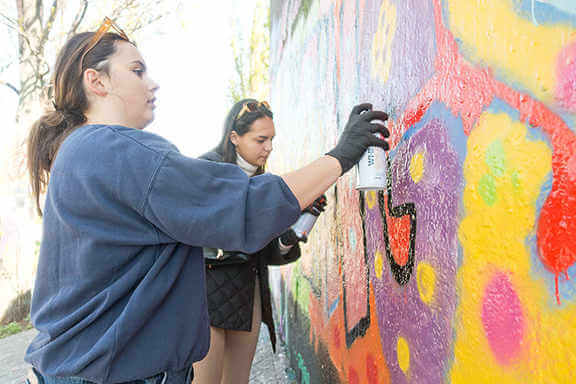
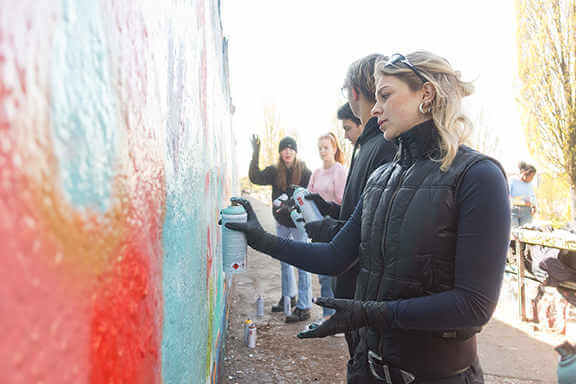
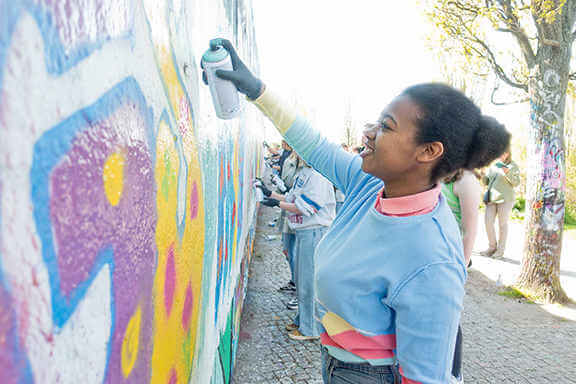
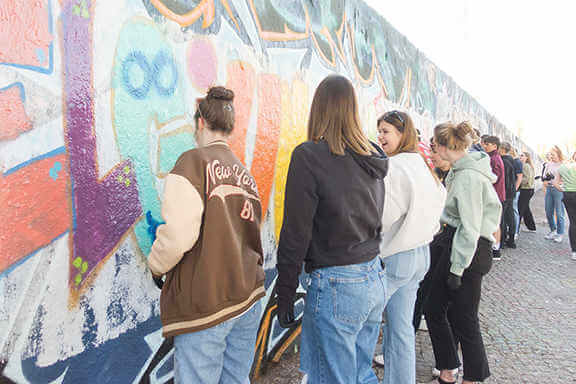

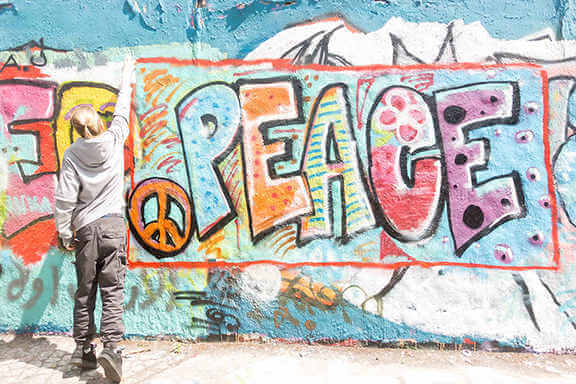
If you’re interested in joining one of our graffiti workshops in Berlin, please don’t hesitate to contact us. We’d be happy to answer any questions you may have and help you reserve your spot in one of our upcoming workshops. You can reach us by email, or through our website contact form. We hope to see you soon for an unforgettable graffiti workshop experience in Berlin!
